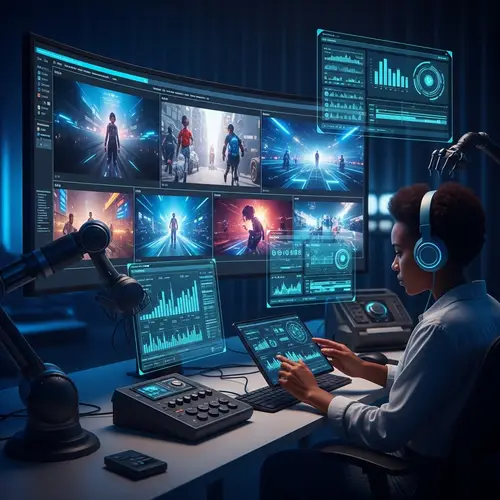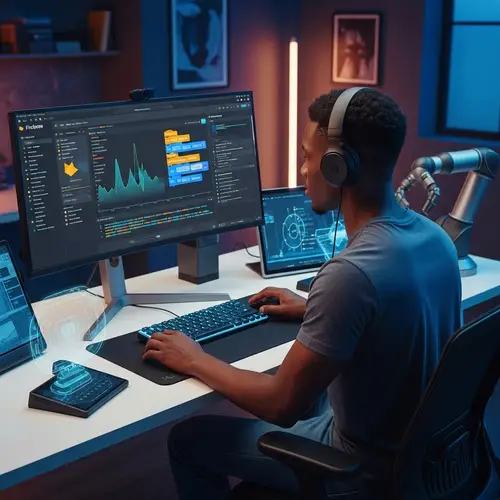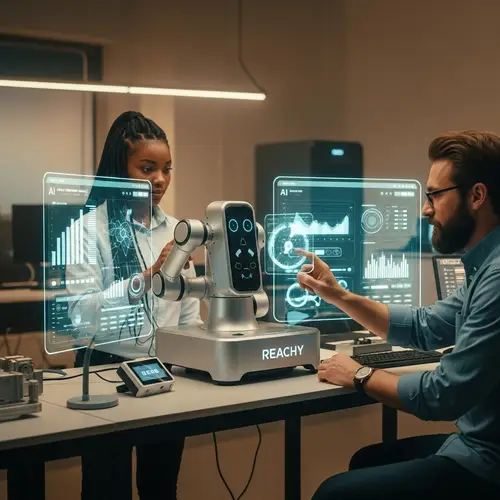Microsoft and OpenAI Clash Over AGI Clause Amid IPO and IP Tensions

Artificial General Intelligence (AGI) might be an abstract concept to many, but for tech powerhouses like Microsoft and OpenAI, it’s become the crux of a stormy dispute. Two longtime AI collaborators are now finding themselves at odds, caught in a web of legalities, governance models, and long-shot ethical clauses — to say the least.
The OpenAI-Microsoft Partnership: A Powerful Alliance With Friction

From the outside, the OpenAI Microsoft partnership has looked like a dream collaboration. Microsoft poured over $13 billion into OpenAI, integrating ChatGPT into Microsoft’s own products like Copilot and Bing. OpenAI, in return, leaned on Microsoft’s Azure infrastructure to scale its AI models and offerings.
But behind the scenes? The relationship has grown more complex, especially following Sam Altman’s brief ousting from OpenAI and his swift return just days later.
Where Things Got Tense: The AGI Clause Controversy

At the heart of the turmoil lies the now-infamous AGI clause. AGI, or Artificial General Intelligence, refers to a theoretical model of AI that can perform any intellectual task a human can — not just chat or draw, but truly reason, create, and adapt across domains.
The clause, tucked into Microsoft’s deal with OpenAI, reportedly grants Microsoft access to OpenAI’s most advanced models if OpenAI ever reaches AGI status. On paper, that sounds like shared progress. But there’s a catch: OpenAI gets to decide when (or if) AGI has been reached.
This subjective marker has become a point of contention. Microsoft, naturally, wants more concrete levers, while OpenAI insists on maintaining ethical oversight through its non-profit board — a hybrid governance model that’s rare in Silicon Valley.
Blocked IPO, Blocked Progress?

In a surprising twist, sources indicate that Microsoft quietly blocked a potential OpenAI IPO. The reason? Protecting IP (intellectual property) and maintaining strategic control over OpenAI’s advanced models — especially if AGI is ever claimed.
This move reflects a deeper concern: if OpenAI goes public, external shareholders could shift its incentive structure, prioritizing profit over principles. Microsoft might also fear dilution of its own influence, as public investors demand transparency and ROI (return on investment) beyond what a private partnership allows.
The OpenAI IPO blocked by Microsoft narrative now floats alongside questions of whether the non-profit foundation can even coexist with the commercial OpenAI LP, the for-profit arm that Microsoft holds shares in.
IP Woes: Who Owns the Future of AI?

Another flashpoint? Intellectual property rights. As OpenAI iterates on its GPT models — transitioning from GPT-3.5 to GPT-4, and inching toward potential AGI — Microsoft has embedded these capabilities deeply into everyday tools like Office 365 and GitHub Copilot.
Yet, OpenAI board members have voiced concerns about who exactly controls these models. Is it OpenAI, the entity developing the tech? Or Microsoft, the one deploying and investing in it?
This power struggle isn’t hypothetical. As AI gets smarter, the value (and liability) of its outputs increases. If Copilot ships a flawed recommendation, who’s responsible — the one who built the model or the one who packaged and sold it?
The Ethics Dilemma Behind AGI

One reason OpenAI resists relinquishing too much control is baked into its mission: to ensure AGI benefits all of humanity. Not just a few stakeholders. Not just early investors. This vision was key to its original formation as a 501(c)(3) nonprofit.
But some argue this model is unsustainable within the high-stakes tech business. Critics claim OpenAI is trying to dance on both sides — advancing cutting-edge tech while maintaining moral high ground. Microsoft, meanwhile, sees itself as a pragmatic instrument to help scale that mission responsibly.
And therein lies the core disagreement: OpenAI vs Microsoft AI strategy. One side pushes for broad societal alignment. The other is optimizing for global enterprise integration and defensible revenue streams.
Who Decides What Counts as AGI?

Defining AGI is like trying to nail Jell-O to a wall. Philosophers, engineers, and ethicists all have slightly different interpretations. OpenAI insists it will recognize AGI when it sees it — when a model exhibits generalized reasoning and learning across unaided domains.
But Microsoft? It wants objectivity. Timelines. Deliverables. Otherwise, how does it know when its AGI clause kicks in?
This tension underscores a glaring issue: tech giants are investing billions into targets that aren’t fully defined. And that makes strategy especially messy when profits, patents, and public trust all hang in the balance.
Where Do We Go From Here?

Don’t expect the OpenAI Microsoft partnership tension to implode tomorrow. Both sides need each other — arguably now more than ever:
- Microsoft needs OpenAI’s models to maintain its AI edge.
- OpenAI needs Microsoft’s funding, infrastructure, and product integration muscle.
But trust, once cracked, is hard to fully restore. Lawyers, ethicists, and engineers are likely deep into negotiations. The future of AGI — and who claims to build it — may depend less on breakthroughs and more on boardroom deals.
FAQ: Demystifying the OpenAI-Microsoft AGI Dispute
The AGI clause allows Microsoft access to OpenAI’s most advanced models if OpenAI ever declares it has achieved AGI. However, OpenAI alone decides when AGI is reached, which creates friction due to the clause’s vagueness.
While not publicly confirmed, reports suggest Microsoft intervened in a potential public offering to maintain control over key IP and ensure the structure of the OpenAI partnership — especially its access to future AGI innovations — remains intact.
Tensions rose post-Sam Altman’s brief removal and reinstatement. Questions around governance, IP ownership, AGI milestones, and corporate influence exposed deeper rifts in their alliance.
That’s still up for debate. The dual structure allows principle-driven goals, but it complicates business decisions. Many wonder if both arms can align when billions — and possibly AGI — are on the line.
No one knows for sure. While models like GPT-4 are powerful, AGI — true human-level intelligence — remains theoretical. But the increasing sophistication of AI makes this more than just science fiction.
Conclusion: Philosophy or Business — Who Wins the AGI Race?

As the OpenAI and Microsoft AGI dispute deepens, it shines a light on something bigger than just two companies feuding. It’s about who controls the future of AI — and who we trust to wield that power responsibly. Is it a philanthropic board? A trillion-dollar corporation? Or some hybrid we haven’t figured out yet?
One thing’s clear: this isn’t just a corporate spat. It’s a fork in the road for AI’s next chapter. The way Microsoft and OpenAI resolve (or don’t resolve) this could shape how innovation is governed, monetized, and kept in check — globally.
Curious about where AI governance is headed? Keep following our coverage for breakdowns, updates, and behind-the-scenes insights on the fiercest tech battles shaping our future.




